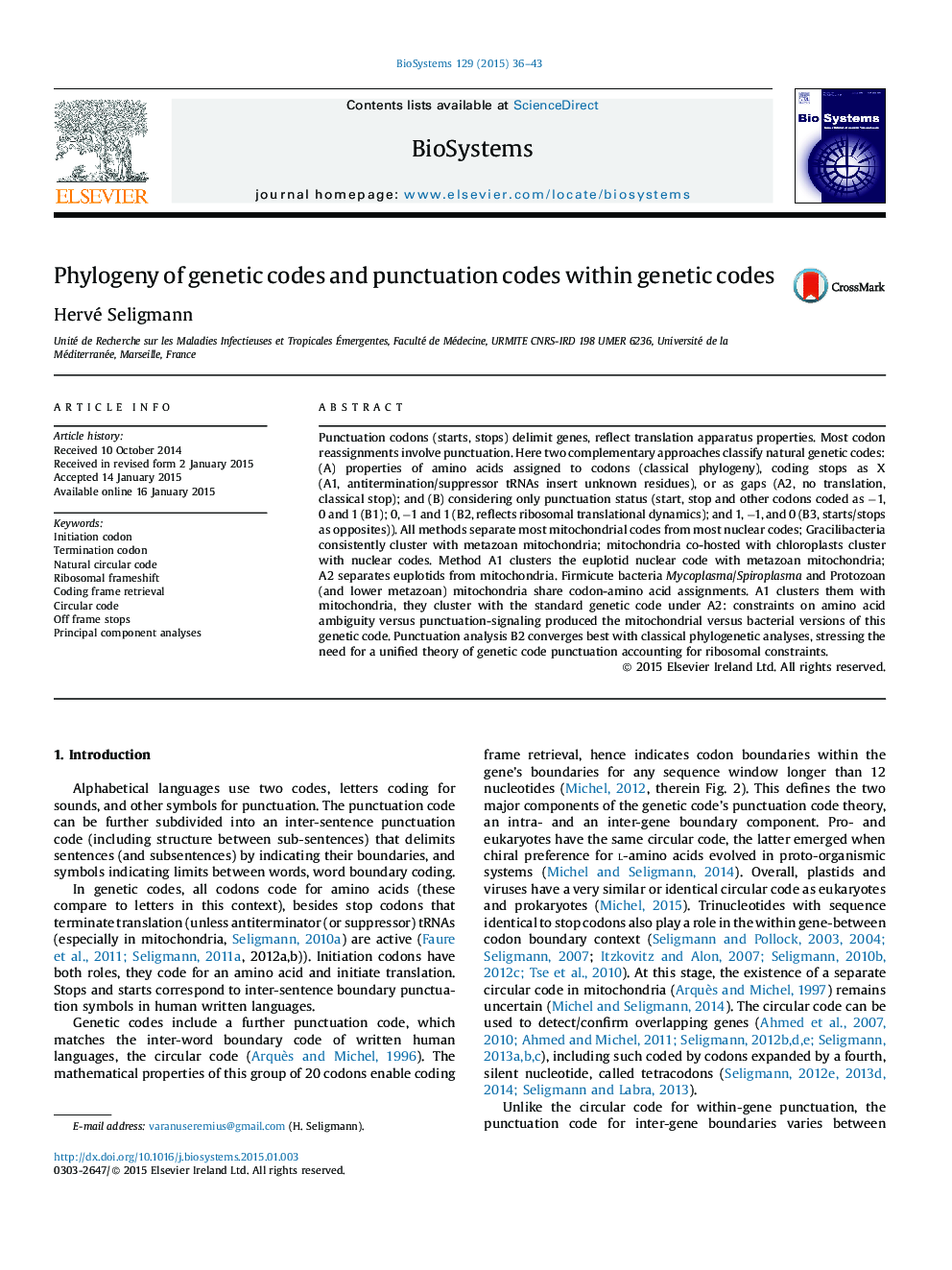| کد مقاله | کد نشریه | سال انتشار | مقاله انگلیسی | نسخه تمام متن |
|---|---|---|---|---|
| 2075882 | 1544975 | 2015 | 8 صفحه PDF | دانلود رایگان |
Punctuation codons (starts, stops) delimit genes, reflect translation apparatus properties. Most codon reassignments involve punctuation. Here two complementary approaches classify natural genetic codes: (A) properties of amino acids assigned to codons (classical phylogeny), coding stops as X (A1, antitermination/suppressor tRNAs insert unknown residues), or as gaps (A2, no translation, classical stop); and (B) considering only punctuation status (start, stop and other codons coded as −1, 0 and 1 (B1); 0, −1 and 1 (B2, reflects ribosomal translational dynamics); and 1, −1, and 0 (B3, starts/stops as opposites)). All methods separate most mitochondrial codes from most nuclear codes; Gracilibacteria consistently cluster with metazoan mitochondria; mitochondria co-hosted with chloroplasts cluster with nuclear codes. Method A1 clusters the euplotid nuclear code with metazoan mitochondria; A2 separates euplotids from mitochondria. Firmicute bacteria Mycoplasma/Spiroplasma and Protozoan (and lower metazoan) mitochondria share codon-amino acid assignments. A1 clusters them with mitochondria, they cluster with the standard genetic code under A2: constraints on amino acid ambiguity versus punctuation-signaling produced the mitochondrial versus bacterial versions of this genetic code. Punctuation analysis B2 converges best with classical phylogenetic analyses, stressing the need for a unified theory of genetic code punctuation accounting for ribosomal constraints.
Journal: Biosystems - Volume 129, March 2015, Pages 36–43
